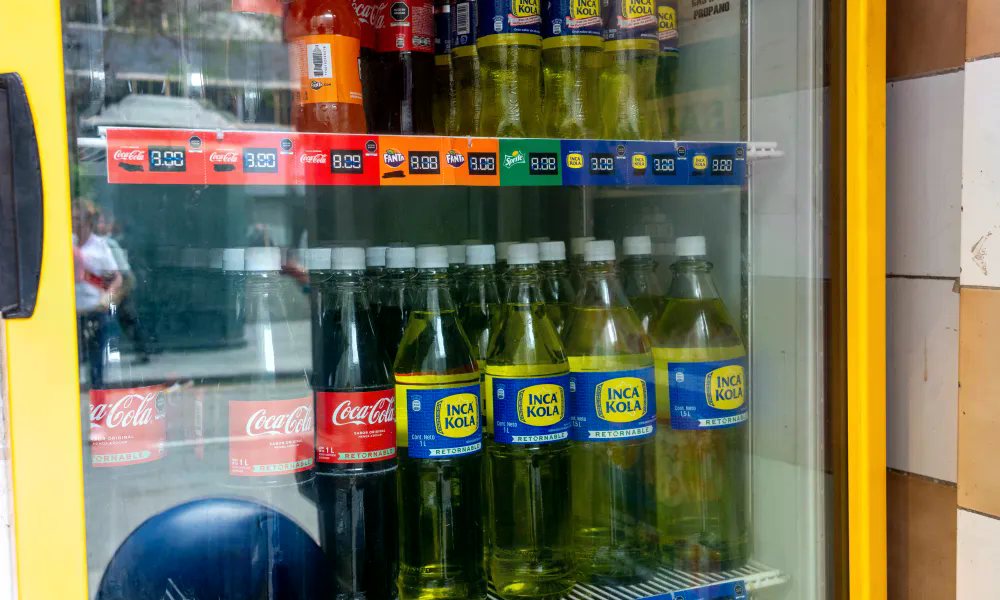How a popular Peruvian soft drink went ‘toe-to-toe’ with Coca-Cola

In Peru, Coca-Cola is not the most popular soft drink. Instead, Inca Kola holds that distinction, a beverage with a rich history deeply tied to the nation’s cultural identity. Since its creation nearly a century ago, Inca Kola has become more than just a drink—it has symbolized national pride and unity.
The origins of Inca Kola trace back to Joseph Robinson Lindley, a British immigrant who arrived in Peru in 1910. He established a drinks factory in Lima and began producing small-batch carbonated fruit beverages. In 1935, he launched Inca Kola, a soda with a secret recipe of 13 herbs and aromatics. This was just a year before Coca-Cola entered the Peruvian market. To counter the growing influence of the global brand, Lindley invested heavily in television advertising, using imagery and slogans that resonated with Peru’s diverse population and its historical connection to the Inca Empire.
Andres Macara-Chvili, a marketing professor at the Pontifical Catholic University of Peru, notes that Inca Kola was one of the first brands to connect with the concept of “Peruanidad,” or what it means to be Peruvian. “It spoke to Peruvians about our diversity and our shared heritage,” he explains.
Beyond its cultural significance, Inca Kola also gained prominence during World War II due to its widespread availability in Japanese-owned bodegas, or small grocery stores. The Japanese community had established itself in Peru as early as the late 1800s, initially through labor contracts. However, they faced discrimination, poor working conditions, and later, xenophobic hostility. By the 1930s, anti-Japanese sentiment had grown, fueled by nationalist rhetoric and fears of economic dominance.
During the war, tensions escalated. After Japan’s attack on Pearl Harbor in 1941, Coca-Cola ceased distribution to Japanese merchants in Peru. This created an opportunity for Inca Kola to fill the void. With the Japanese community’s extensive network of bodegas, Inca Kola quickly became the preferred choice, strengthening its bond with this demographic. Despite increasing hostility, including government deportations and the closure of Japanese institutions, the community remained influential and left a lasting impact on Peruvian society.
Today, over 300,000 Peruvians claim Japanese ancestry, and their cultural contributions are evident in various sectors, including food. Inca Kola remains a staple in Asian-Peruvian fusion eateries, reinforcing its role as a symbol of shared heritage.
For decades, Inca Kola outcompeted Coca-Cola in the domestic market. However, by the late 1990s, financial struggles led the Lindley family to sell a 50% stake in their company to Coca-Cola for approximately $200 million. While some viewed the sale as a betrayal, others see it as a pragmatic move that preserved the brand’s local identity. Coca-Cola allowed the Lindleys to retain control of bottling and distribution within Peru, ensuring that Inca Kola continued to reflect the country’s unique character.
In modern-day Lima, Inca Kola remains a familiar presence. Josel Luis Huamani, a tattoo artist, describes it as a tradition passed down through generations. Maria Sanchez, a food vendor, echoes this sentiment, linking the drink to the legacy of the Inca. For Tsinaki Samaniego, a member of the Ashaninka Indigenous group, Inca Kola is simply “an old friend.”
This article is part of “Ordinary Items, Extraordinary Stories,” a series exploring the surprising histories behind everyday objects.


